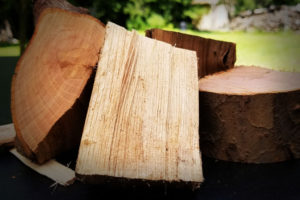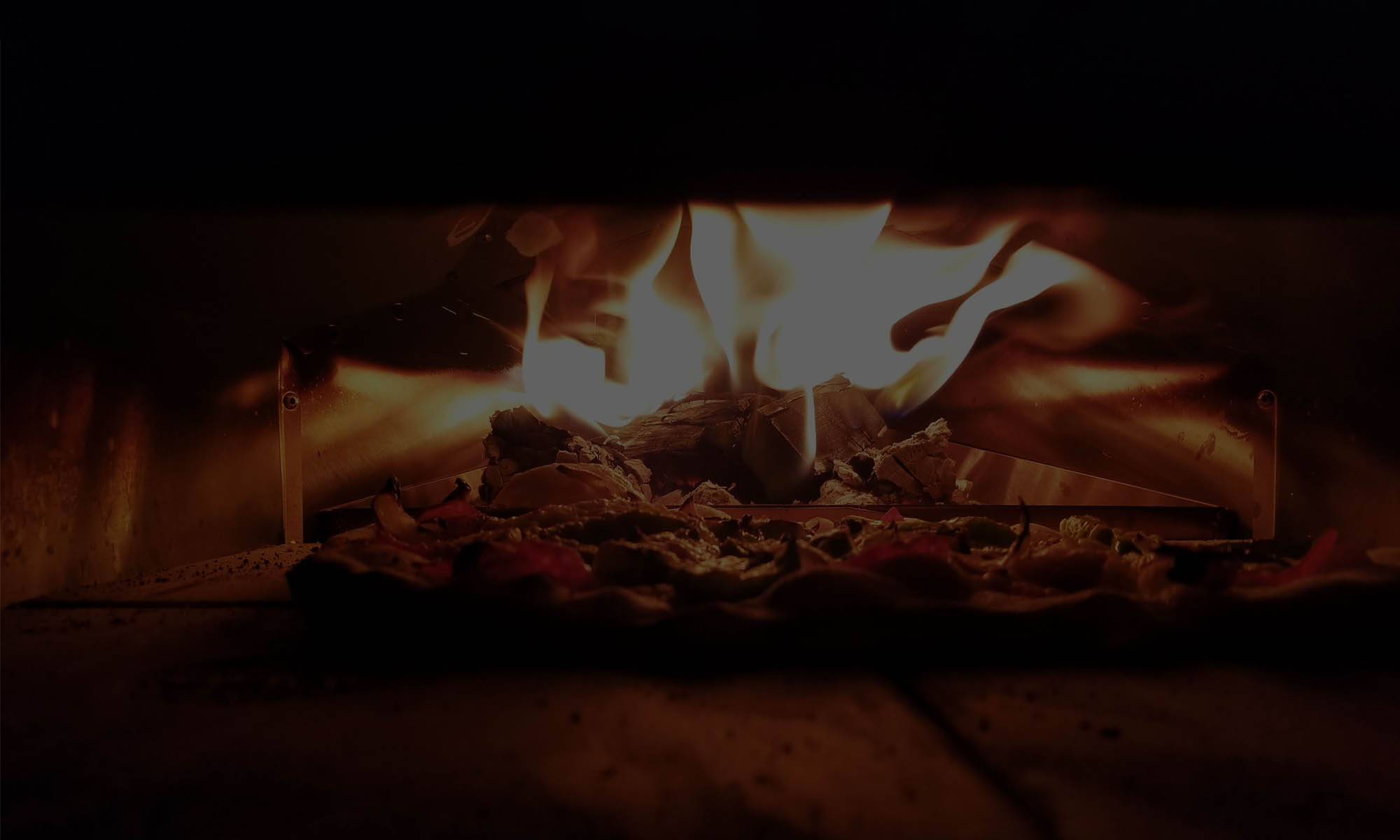What Kinds of Wood Fuel Do We Cook With?
So what kinds of wood fuel do we cook with? This is a natural question that comes to us when we sings the praises of cooking with wood. There are a number of factors to consider when cooking with wood and its various permutations. That’s because there are many kinds of wood fuels to choose from. Pellets, charcoal, lump charcoal, wood chunks… where do you start? In this article, we’ll review the pros and cons of utilizing some of these natural sources of wood fuel.
 Wood Chunks
Wood Chunks
This kind of wood fuel seems the most primal. It’s the most basic form of cooking. You take a piece of a tree, light it on fire, then cook food from the heat that comes from it. Wood chunks can create an intense heat that quickly cooks food. The downside is: getting to that point can be a time-consuming process. This can take as long as an hour or more (especially if you don’t know what you’re doing).
Wood chunks come in a wide variety—hickory, mesquite, and cedar, to name a few. That means you can infuse your food with a smoky aroma that’s well-suited to enhancing its particular flavor. This smoke can also prove to be a drawback if it gets out of control. Depending on your location, firewood may also be more expensive than the fuel of conventional cooking methods. And usually you will not be able to cook with it in your home. That males it a somewhat seasonally-contingent activity for most of us. The die-hard wood cooker will brave the elements year round.
Santa Maria style grills and grill kits specialize in cooking with wood chunks. They are highly popular in the west and southwest. Their simplicity and beauty make them an attractive option for many.
 Briquettes
Briquettes
Charcoal briquettes are probably the most popular of all the kinds of wood fuel. The charcoal grills they’re used in are generally smaller and convenient for camping, tailgating, and other outdoor events. It can be cheaper to grill with briquettes than it is with gas or propane, although they can create a lot more post-barbecue cleanup. While conventional gas and propane grills can be lit with the flick of a switch, briquettes do take some time to build up heat. Briquettes have a uniform shape and are easier to stack than lump charcoal; they also burn longer and create a consistent temperature. They tend to contain additives that facilitate their combustibility, but if you don’t want any possibility of those scents carrying into your food, you can simply wait until they become covered in white ash. Most people won’t mind or even enjoy the smoky flavor that briquettes can add to your grilled food.
Lost in the plethora of charcoal grills to buy? You can’t go wrong with a Weber 22-inch Kettle grill. We have tried the cheaper alternatives at big box stores, but for many reasons, the Weber grills have stood the test of time.
 Pellets
Pellets
Pellets are a way to combine the benefits of wood cooking with the ease of conventional ovens or grills. They’re essentially little cylinders of compressed sawdust, and a natural glue in the wood (lignin) ignites with high pressure and heat. They preheat quickly and have great temperature control, facilitating a variety of cooking methods such as smoking, roasting, baking, and grilling.
A pellet grill works like a convection oven, which means you can load it up without fear of the food cooking unevenly, and the smoky flavor is more subtle than the one you would get with charcoal or wood (which could be a drawback, depending on your tastes). Despite the relative ease they offer, a pellet grill is expensive, often with a price tag of several thousand dollars. There are some to be had for less though. Traeger is a trusted brand in the pellet grill world. They offer plenty in the sub-$1000 range.
Alternatively, outdoor ovens are starting to rise in popularity. Ooni (formerly Uuni) has a fantastic oven called the Ooni Pro (formerly Uuni Pro). It can use wood, charcoal, wood pellets or even gas!
 Lump Charcoal
Lump Charcoal
Lump Charcoal burns hotter and cleaner than traditional briquettes, but it requires a little more technical finesse. While briquettes consist mostly of condensed charcoal, they also have additives that help them burn better, such as cornstarch and possibly even lighter fluid. By contrast, lump charcoal is just pieces of charred wood with no additives. It doesn’t burn as consistently as briquettes, so the heat can vary a little bit and requires some captainship at the grill.
Lump charcoal can create the heat of a small inferno, which is great for searing the exterior of meats like steak or fish, but if you’re cooking chicken or something you want to cook all the way through, you’ll need to wait until the lump charcoal cools down. Perhaps the best way to mitigate the cons of lump charcoal while embracing the pros is to find a brand you like and use it consistently, or otherwise mix and match it with traditional briquettes.
Once again, if you’re trying to ease your way into the world of cooking with wood, Weber makes a great grill at an affordable price (at the time of this post, they were $99 to $200 or more, depending on the model/package).
 We hope this helps you in your quest to explore the delicious world of cooking with wood. The various kinds of wood fuel provide different experiences and outcomes. From the high and searing heat of lump charcoal, to the low-and-slow abilities of pellets, they all have a place in the WoodCookers’ arsenal. Get out there. Try cooking with wood. Enjoy the journey, not just the destination.
We hope this helps you in your quest to explore the delicious world of cooking with wood. The various kinds of wood fuel provide different experiences and outcomes. From the high and searing heat of lump charcoal, to the low-and-slow abilities of pellets, they all have a place in the WoodCookers’ arsenal. Get out there. Try cooking with wood. Enjoy the journey, not just the destination.
Get started cooking with wood! Below are just a few of the myriad of possibilities. The best way to learn is to just start somewhere.
- Basic and TRUSTED charcoal grill – Weber 22″ kettle grill (CHECK IT OUT HERE)
- Serious Argentine style grill (cooking with straight up wood) – Norcal Ovenworks The Ash (CHECK IT OUT HERE)
- Affordable yet professional-result pizza oven – Ooni (CHECK IT OUT HERE)
- Cook over your firepit – Sunnydaze firepit (CHECK IT OUT HERE) or just learn about firepit cooking (CHECK THIS OUT)
- Smoking meat – Weber Smokey Mountain (CHECK IT OUT HERE)
- Fireplace cooking – Rome Fireplace Grate (CHECK IT OUT HERE)
- Learn about cooking on your wood stove – (CHECK THIS OUT)


